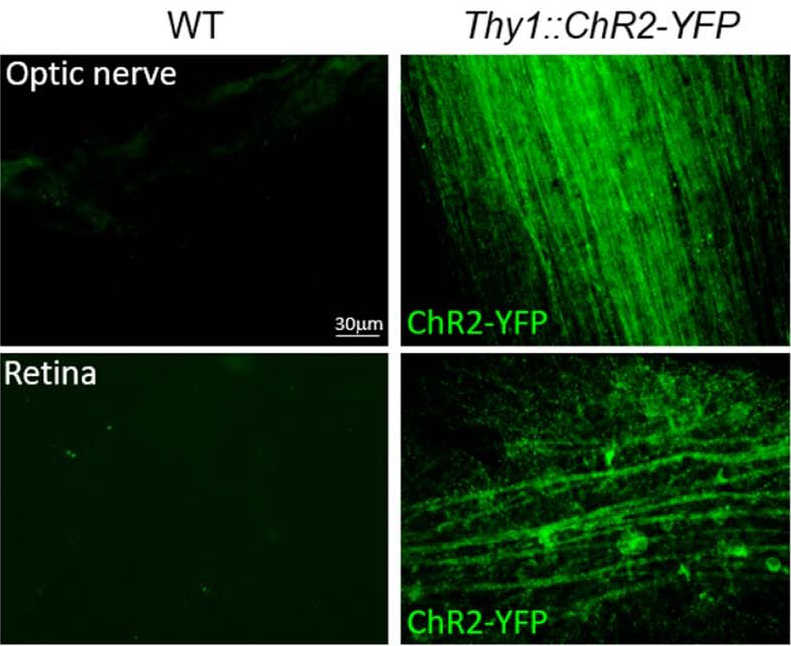
Stanford Bio-X affiliated faculty members Dr. Erin Gibson, Dr. Jeffrey Goldberg, Dr. Michelle Monje, and Dr. John Huguenard, and Stanford Bio-X Undergraduate Summer Research Program Participant Jared Hysinger.
New research from Stanford Bio-X affiliated faculty members Michelle Monje, Jeffrey Goldberg, John Huguenard, and Erin Gibson, with Stanford Bio-X Undergraduate Summer Research Participant Jared Hysinger, finds that light-induced activation of neuronal cells in the retina stimulates the formation of optic-nerve tumors in cancer-prone mice, revealing a potential role of neuronal activity in cancer initiation.

Extended Data Figure 1: Increased activity of the optic nerve
drives growth of Nf1-OPG.
Cancer is not a disease involving uncontrolled division of isolated cells; rather, it is a condition in which various types of normal and malignant cells collaborate to drive tumor growth and dissemination. To the surprise of many, the nervous system — which includes neuronal cells and non-neuronal cells of the brain, spinal cord and nerves throughout the body — can also be involved in cancer progression. Writing in Nature, the team reports that, in a mouse model of a rare disease that predisposes people to tumors along the optic nerve, light-induced neuronal activity is responsible not only for the growth of these tumors, but also for their initiation.
Neurofibromatosis type 1 (NF1) affects one in about 3,000 people worldwide, and is caused by a mutation in the gene of the same name. Individuals with the NF1 gene mutation are predisposed to early-childhood development of slow-growing (low-grade) tumors called gliomas along the optic pathway — the nervous pathway that includes the optic nerve and that carries visual information from the light-sensing cells of the retina to the brain.





